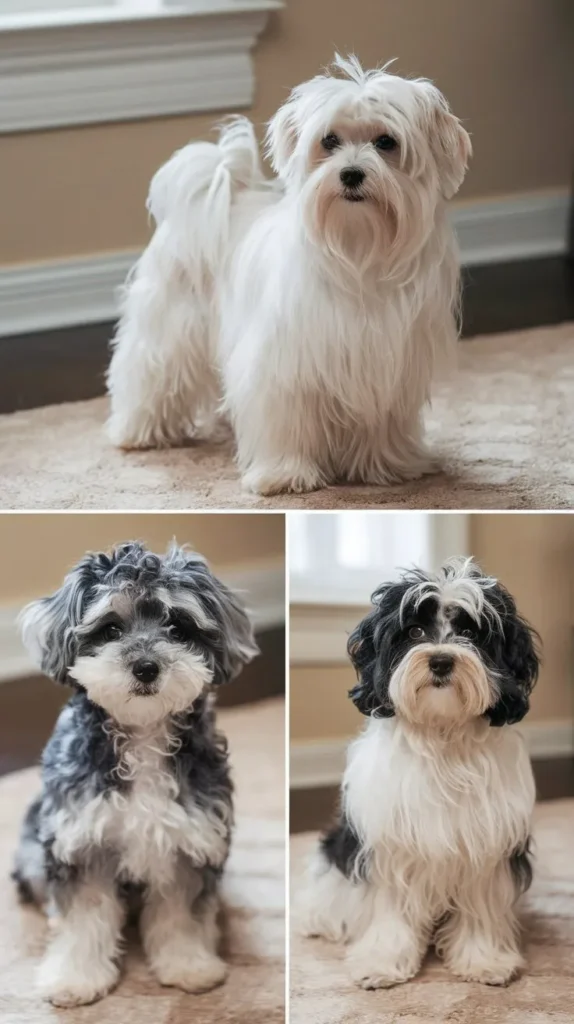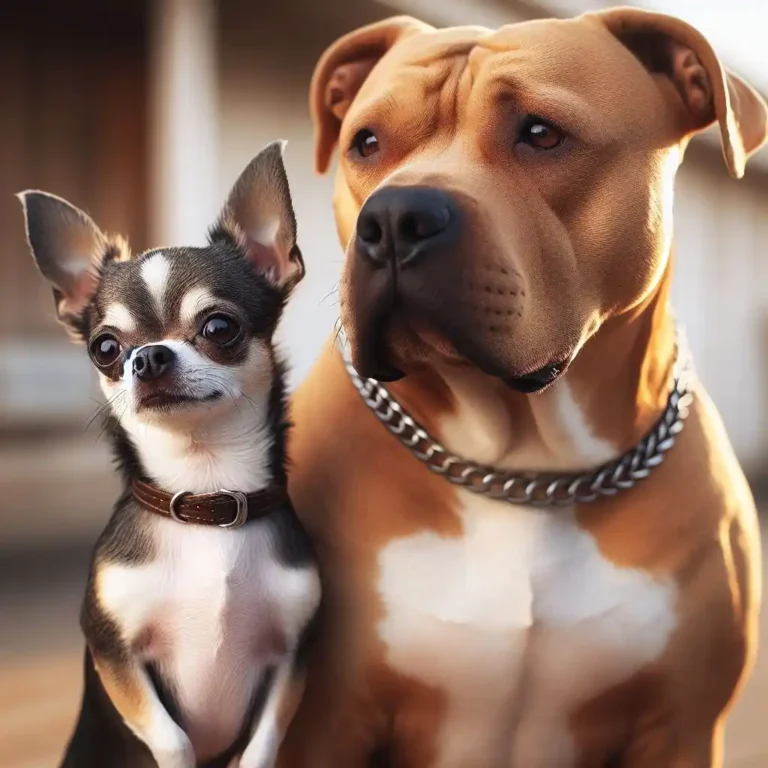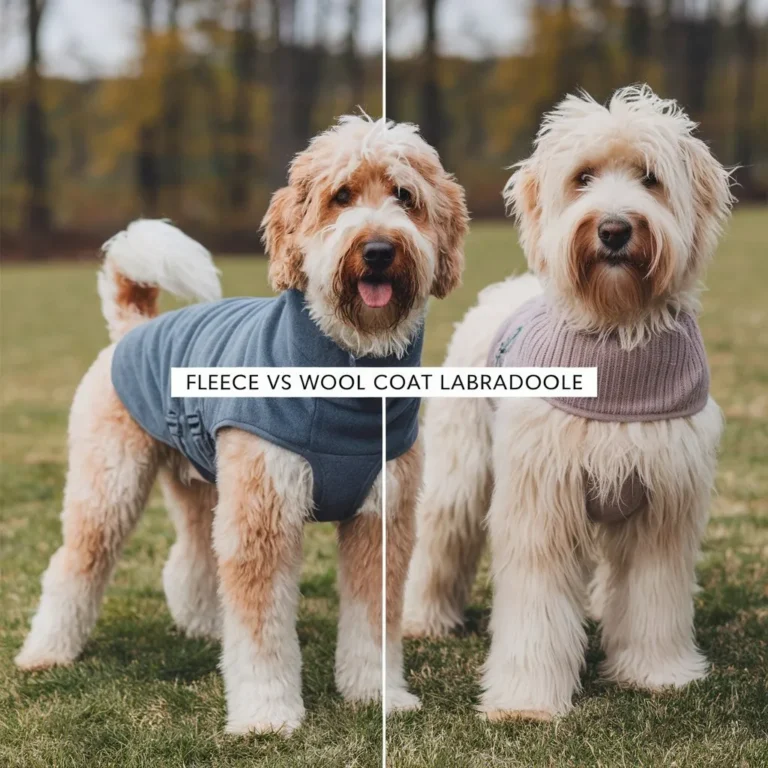Maltese Vs Maltipoo: Grooming, Training, and Health Compared
As you consider bringing a small, affectionate dog into your life, you may be torn between the Maltese and Maltipoo breeds. Both are known for their loving nature and compact size, but that’s where the similarities end.
You’re probably wondering which breed is right for you, and it all comes down to the specifics. From their origins to their grooming needs, energy levels, and training requirements, there are key differences to explore. So, which breed will win your heart – the silky-coated Maltese or the curly-haired Maltipoo?
In a Nutshell

- Maltese are a purebred toy-sized dog, while Maltipoo is a hybrid breed resulting from crossbreeding a Maltese and a Poodle.
- Maltese weigh between 4-8 pounds, whereas Maltipoo weight ranges from 4-20 pounds, depending on the size of its Poodle parent.
- Both breeds require regular grooming, but Maltipoo’s curly or wavy coat may need more frequent attention than the Maltese’s smooth coat.
- Maltese are relatively low-maintenance with exercise, needing 10-15 minutes daily, while Maltipoos require daily walks, playtime, and mental stimulation.
Breed History and Origins

When exploring the Maltese and Maltipoo breeds, you’ll discover that their histories and origins are vastly different, with the Maltese tracing its roots back over 2,000 years to the island of Malta.
This ancient lineage is steeped in Mediterranean roots, where the Maltese was bred as a lapdog for royalty and nobility. With its silky white coat and gentle nature, it’s no wonder the Maltese was a favorite among the aristocracy.
In contrast, the Maltipoo is a more recent creation, resulting from the crossbreeding of a Maltese and a Poodle.
This hybrid breed was designed to combine the low-shedding qualities of the Poodle with the affectionate nature of the Maltese. While the Maltipoo may not have the same ancient history as the Maltese, it’s quickly become a popular companion dog in its own right.
As you dig deeper into the world of these two breeds, you’ll find that their unique histories and origins have shaped their characteristics and personalities in distinct ways.
Size and Weight Comparison

When looking at the size and weight of Maltese and Maltipoos, you’ll notice some key differences.
You’ll find that the Maltese is a toy breed, typically weighing between 4-8 pounds and standing 8-10 inches tall.
Meanwhile, the Maltipoo‘s weight can range from 4-20 pounds, depending on the size of its Poodle parent, with heights varying from 8-14 inches.
Maltese Average Size
Measuring 8-10 inches tall at the shoulder and weighing between 4-8 pounds, the Maltese is a toy-sized dog that fits comfortably in your lap.
As you consider bringing a Maltese into your life, it’s vital to understand their growth and development stages. During the Maltese puppy development stage, which typically lasts from birth to one year, they’ll experience rapid growth. You’ll notice significant changes in their size, coat, and behavior.
After the first year, they’ll enter the adult stage, where they’ll reach their full size and mature into a beautiful, gentle companion.
As you look forward to spending years with your Maltese, it’s imperative to know that they’ve an average lifespan of 12-15 years.
During this time, they’ll go through various lifespan stages, including puppyhood, adolescence, adulthood, and seniorhood.
Understanding these stages will help you provide the best possible care and attention to your Maltese, ensuring they live a happy, healthy life by your side.
With proper care and attention, your Maltese will thrive, bringing joy and companionship into your life for years to come.
Maltipoo Weight Range
Maltipoos typically weigh between 4-8 pounds, with some reaching up to 12 pounds, depending on the size of their Poodle parent. This weight range can vary greatly, and considering the importance of puppy nutrition is crucial in determining your Maltipoo’s adult size. A well-balanced diet will help your puppy grow into a healthy, thriving adult.
Be wary of breeders who promise ‘teacup’ Maltipoos, as this is often a myth. There’s no such thing as a ‘teacup’ breed, and these claims are usually just a marketing tactic to attract unsuspecting buyers. What you’ll get is a puppy that’s likely underfed or malnourished, which can lead to a range of health problems.
When researching Maltipoo breeders, look for those who prioritize puppy nutrition and provide a nurturing environment for their puppies. A reputable breeder will be transparent about the expected adult weight of their puppies and will provide guidance on how to maintain a healthy weight through proper feeding and exercise. By doing your due diligence, you’ll find a healthy, happy Maltipoo that will thrive as your loyal companion.
Grooming Needs and Styles

As you consider bringing a Maltese or Maltipoo into your life, you’ll want to think about their grooming needs and styles.
You’ll need to decide if you’re comfortable with daily brushing, regular trimming, and potential shedding.
Coat Type Variations
When it comes to coat type variations, you’ll notice that both Maltese and Maltipoo breeds boast a range of textures and lengths that require specific grooming needs and styles.
One key factor to ponder is coat color inheritance, which can affect the shade and intensity of your dog’s coat. Maltese dogs typically have a pure white coat, while Maltipoos can inherit a range of colors from their Poodle parent, including black, silver, and apricot.
In terms of texture variation patterns, Maltese dogs have a silky, smooth coat that requires regular brushing to prevent matting.
Maltipoos, on the other hand, can inherit the Poodle’s curly or wavy coat, which requires more frequent grooming to prevent tangling. You’ll need to weigh these differences when deciding on a grooming routine for your dog.
Both breeds require regular trimming and clipping to maintain their coat’s health and appearance.
Shedding Differences
Considering your dog’s shedding habits is essential, since Maltese and Maltipoos have distinct coat characteristics that impact their grooming needs and styles.
As a dog owner, you’ll want to know that Maltese dogs have a hypoallergenic coat that sheds minimally, making them a great choice for those with allergies. They require regular brushing to prevent matting and tangling, but they don’t shed much, even during shedding seasons.
On the other hand, Maltipoos, being a cross between a Maltese and a Poodle, can inherit the Poodle’s low-shedding trait. However, their shedding habits can vary depending on the dominant breed characteristics. Some Maltipoos may shed more than others, but overall, they tend to shed less than many other breeds.
To maintain their coat, you’ll need to brush them regularly, ideally daily, to prevent matting and tangling.
Regardless of which breed you choose, regular coat maintenance is pivotal to prevent matting and tangling. By understanding your dog’s shedding habits, you can tailor your grooming routine to meet their specific needs, ensuring they look and feel their best.
Styling Options
You’ll have plenty of styling options to choose from with both Maltese and Maltipoos, thanks to their beautiful, curly coats that can be tailored to suit your personal taste and their individual characteristics.
Both breeds offer hairstyle versatility, allowing you to experiment with different looks. You can opt for a short, easy-to-maintain style or go for a longer, more glamorous look.
Fashionable trims, such as the ‘puppy cut‘ or ‘teddy bear cut,’ are popular choices for both breeds. These trims require regular grooming to prevent matting and tangling, but they add to the dogs’ adorable factor.
If you prefer a more low-maintenance approach, you can choose a simpler style that still showcases their natural beauty.
Regardless of the style you choose, regular grooming is essential to prevent matting and keep their coats looking healthy and shiny. With the right care, your Maltese or Maltipoo can be a stunning companion that turns heads wherever you go.
Energy Levels and Exercise

Both Maltese and Maltipoo breeds require regular exercise to stay happy and healthy, but their energy levels differ substantially.
As you consider bringing one of these dogs into your life, you must comprehend their exercise needs.
Maltese dogs are relatively low-maintenance with regard to exercise. They’re happy with short, gentle walks and playtime indoors. You’ll need to dedicate about 10-15 minutes a day to their physical activity.
In contrast, Maltipoos are more energetic and require more exercise to keep them happy and healthy. They need daily walks, playtime, and mental stimulation to prevent boredom and destructive behavior.
You’ll need to set aside at least 30 minutes a day for their exercise and playful moments. Incorporate daily routines like short walks, playtime in the backyard, or indoor play to keep them engaged.
Remember, every dog is unique, so be prepared to adjust your exercise plan based on your dog’s individual needs and energy levels.
Training and Temperament

As you establish a routine for your dog’s physical activity, it’s equally important to focus on their mental development through training, which is closely tied to their temperament.
Both Maltese and Maltipoo breeds require consistent training and socialization to become well-adjusted companions.
You’ll want to start with basic obedience commands and housebreaking strategies to establish a strong foundation. Positive reinforcement techniques, such as reward-based training, work well for these breeds.
Socialization techniques, like exposing your dog to new people, sights, and sounds, are also vital to prevent anxiety and fear-based behaviors.
Be patient and consistent, as both breeds can be stubborn at times.
With time and effort, you can develop a strong bond with your dog and help them become a well-behaved and loyal companion.
Remember, every dog is unique, so it’s pivotal to tailor your training approach to your dog’s individual needs and personality.
Health and Longevity Expectations

Your Maltese or Maltipoo’s health and longevity expectations depend on several factors, including genetics, diet, exercise, and regular veterinary check-ups.
As a responsible pet owner, you’ll want to stay on top of these elements to guarantee your furry friend lives a long, healthy life.
Both Maltese and Maltipoos are prone to certain health issues, such as eye problems like cataracts and progressive retinal atrophy.
Regular eye exams can help detect these issues early on, and preventative measures like keeping your pet’s eyes clean can go a long way.
Genetic predispositions also play a role, so working with a reputable breeder who health tests their breeding stock is crucial.
Additionally, a balanced diet and regular exercise can help prevent obesity, which is a common issue in both breeds.
By staying vigilant and proactive, you can help your Maltese or Maltipoo live a happy, healthy life for 12-15 years or more.
With the right care, your pet can thrive and bring joy to your life for years to come.
Frequently Asked Questions
Can Maltese and Maltipoos Be Left Alone During the Day?
You can leave your dog alone during the day, but beware of separation anxiety. Consider daycare options or hiring a dog walker to keep them company, reducing anxiety and ensuring a happier pup.
Are Maltese and Maltipoos Good With Small Children?
You’re wondering if your furry friend is suitable for a household with tiny humans? Generally, small breeds can thrive with toddlers if socialized properly, but they require gentle guidance and consistent boundaries to guarantee a harmonious coexistence.
Can Maltese and Maltipoos Be Trained to Use a Litter Box?
You can train your dog to use a litter box with patience and consistency. Start with Litter Box Essentials like a suitable box and odor-free litter, then explore Potty Pad Options for a smooth shift to freedom from accidents.
Do Maltese and Maltipoos Make Good Watchdogs?
You’ll find that many toy breeds, despite their small size, can make decent watchdogs due to their strong breed instincts and high alertness levels, but they’re not naturally aggressive, so don’t expect them to defend you physically.
Can Maltese and Maltipoos Thrive in Apartment Living?
You can thrive in apartment living if you’re willing to provide regular exercise and training, despite noise limitations, making them ideal for urban dwellers who desire freedom and a low-maintenance pet.




















Hi, I’m Ella Frost, a devoted animal lover working at CuddlyCreatureCare.com. My passion for animals drives me to share my knowledge through comprehensive guides on animal care and rescue. I’m here to help you understand and care for your furry friends better.







